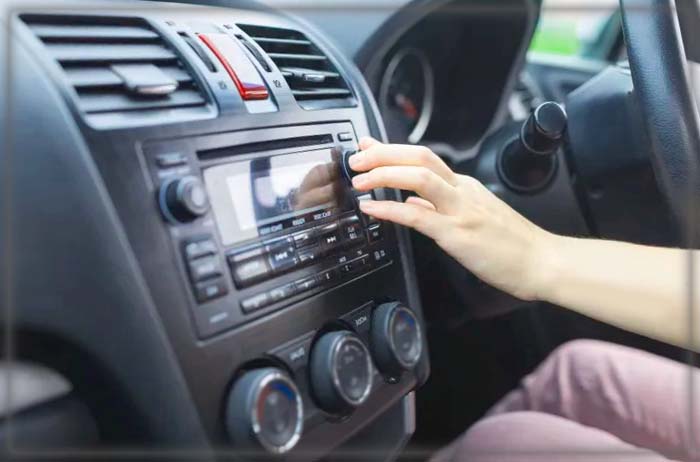A new car battery is a significant investment and ensuring that it provides reliable service for years to come is important. Unfortunately, there may be times when your new car battery won’t hold a charge, preventing you from starting up your vehicle. If this happens to you, there are some steps you can take to troubleshoot the issue and get your car running again. This article will explain some common causes of this problem and provide an easy-to-follow troubleshooting guide for fixing the problem.
What Causes a Car Battery Not to Hold Its Charge?
A car battery not holding its charge can be caused by several factors. Understanding these causes is essential for effective troubleshooting and resolving the issue. Here are some common culprits behind this problem:
-
Battery Age and Condition: Car batteries naturally deteriorate over time and lose their ability to hold a charge. If your one is old or worn out, it may need help to retain sufficient power, resulting in a drained accumulator.
-
Parasitic Battery Drain: Parasitic battery drain refers to a continuous power draw from certain components even when the vehicle is turned off. Faulty electrical systems, such as malfunctioning alarms, radio, interior lights, or power accessories, can cause an excessive drain on the accumulator and prevent it from holding a charge.
-
Charging System Issues: A faulty alternator or voltage regulator can impact the charging system’s effectiveness. If the alternator fails to recharge the battery properly while the vehicle runs, it may not hold its charge for long.
-
Corroded or Loose Battery Connections: Poor electrical connections between the battery terminals and cables can reduce the power available to the vehicle. Corroded or loose cables can also prevent sufficient power from reaching critical components like the starter motor, causing a dead battery.
-
Electrical Component Issues: Certain electrical components within the vehicle, such as a malfunctioning starter motor or faulty ignition switch, can draw excessive power from the battery, leading to a drained one and an inability to hold a charge.
-
Extreme Temperatures: Extreme temperatures can also have a negative effect on a car battery. In hot climates, the heat can accelerate the breakdown of lead-acid batteries and reduce their ability to hold a charge. Cold weather can also cause battery chemical compounds to freeze and become less conductive, leading to reduced cranking performance.
-
Short Trips and Infrequent Driving: Vehicles driven for short distances or infrequently may not allow the vehicle power unit to recharge fully. This can result in a weakened battery that struggles to hold a charge.
By determining the exact cause or combination of factors, you can apply the necessary solutions to address the issue of a car battery that fails to retain its charge. It is advisable to seek advice from a qualified mechanic or conduct a comprehensive examination of the battery and charging system to identify the problem and ensure an effective and accurate resolution.
How to Test Your Car Battery
The initial and fundamental step in troubleshooting a car battery that fails to charge is conducting a comprehensive test. With the assistance of an automotive meter, you can precisely assess the voltage and current output of the accumulator. If the voltage reading indicates a value lower than 12 volts, it strongly suggests that the car power unit is either deceased or in the advanced stages of deterioration. By examining the current output, you can identify potential parasitic draws draining the battery’s power. In more complex scenarios, it may be prudent to seek the expertise of a professional mechanic or visit an authorized auto shop, allowing them to conduct a meticulous inspection of your car’s charging system. This in-depth evaluation may involve testing for voltage drops at various critical points along the electrical circuit, providing a comprehensive analysis of the charging system’s integrity and efficiency. By undertaking these steps, you can gain valuable insights into the underlying causes of the battery’s inability to retain a charge and take the necessary actions to rectify the situation. Once you’ve identified your battery’s issue, consider learning about the Best Group 65 Battery if replacement becomes necessary for your vehicle’s optimum performance.
How to Fix a Car Battery That Won’t Hold Its Charge
Once you have identified why your car accumulator won’t hold its charge, you can begin repairing it according to these steps:
-
Check the Alternator and Electrical System: After testing the battery, inspecting the alternator and the overall electrical system is essential. The alternator should generate sufficient power to recharge the car accumulator while the engine runs. To check the alternator, you can measure its voltage output using a multimeter. Ensure that it is within the manufacturer’s specified range. Additionally, inspect the alternator belt for proper tension and signs of wear. Loose or damaged belts can affect the alternator’s performance. Moreover, examine the electrical connections and fuses related to the charging system. Loose or corroded connections and blown fuses can disrupt the charging process and lead to battery drainage.
-
Clean and Restore Corroded Connections: Insufficient and compromised connections between the battery terminals and cables can harm your vehicle’s power supply. It is imperative to address these issues by thoroughly cleaning and restoring the connections to their optimal state. Remove any corrosion or buildup from the terminals using a wire brush or a specialized terminal cleaner. This will facilitate a secure and reliable connection. Additionally, carefully inspect the cables for any visible signs of wear, such as fraying or exposed metal wires. If such issues are detected, it is crucial to promptly address them by replacing the affected cables or undertaking suitable repairs to prevent further damage and ensure a safe and efficient electrical connection.
-
Recharge or Replace the Battery: If your car’s power unit voltage is low but still viable, you can recharge it using a charger. Connect the charger to the battery following the manufacturer’s instructions. Select the appropriate charging mode for your accumulator type and set the charger to the correct voltage. Allow the car power unit to charge fully, which may take several hours or overnight, depending on the charger and the battery’s condition. It’s important to monitor the charging process and avoid overcharging the accumulator. However, if the battery fails to hold a charge even after recharging, replacing it with a new one may be necessary. Consult your vehicle’s manual or seek professional assistance to ensure you select the correct battery with the appropriate specifications for your car.
Remember, if you need clarification on any step or encounter complex issues, it’s recommended to consult a professional mechanic or an auto shop for a thorough diagnosis and repair. Proper maintenance and regular inspections of your car’s battery and charging system can help prevent future charging problems and ensure reliable vehicle performance.
Conclusion
A car battery that won’t hold its charge can be a frustrating problem, but it doesn’t have to be permanent. By understanding the common causes of this issue and diligently following the steps outlined in this comprehensive troubleshooting guide, you can effectively diagnose and resolve the problem. Remember to check your vehicle power unit regularly, as routine maintenance is vital in preserving its performance and longevity, ultimately helping you avoid any inconvenient breakdowns. By prioritizing proper care and maintenance, you can ensure your car battery remains reliable and provides uninterrupted service for many years.


 Parasitic Battery Drain: Parasitic battery drain refers to a continuous power draw from certain components even when the vehicle is turned off. Faulty electrical systems, such as malfunctioning alarms, radio, interior lights, or power accessories, can cause an excessive drain on the accumulator and prevent it from holding a charge.
Parasitic Battery Drain: Parasitic battery drain refers to a continuous power draw from certain components even when the vehicle is turned off. Faulty electrical systems, such as malfunctioning alarms, radio, interior lights, or power accessories, can cause an excessive drain on the accumulator and prevent it from holding a charge. Clean and Restore Corroded Connections: Insufficient and compromised connections between the battery terminals and cables can harm your vehicle’s power supply. It is imperative to address these issues by thoroughly cleaning and restoring the connections to their optimal state. Remove any corrosion or buildup from the terminals using a wire brush or a specialized terminal cleaner. This will facilitate a secure and reliable connection. Additionally, carefully inspect the cables for any visible signs of wear, such as fraying or exposed metal wires. If such issues are detected, it is crucial to promptly address them by replacing the affected cables or undertaking suitable repairs to prevent further damage and ensure a safe and efficient electrical connection.
Clean and Restore Corroded Connections: Insufficient and compromised connections between the battery terminals and cables can harm your vehicle’s power supply. It is imperative to address these issues by thoroughly cleaning and restoring the connections to their optimal state. Remove any corrosion or buildup from the terminals using a wire brush or a specialized terminal cleaner. This will facilitate a secure and reliable connection. Additionally, carefully inspect the cables for any visible signs of wear, such as fraying or exposed metal wires. If such issues are detected, it is crucial to promptly address them by replacing the affected cables or undertaking suitable repairs to prevent further damage and ensure a safe and efficient electrical connection.
Add Comment